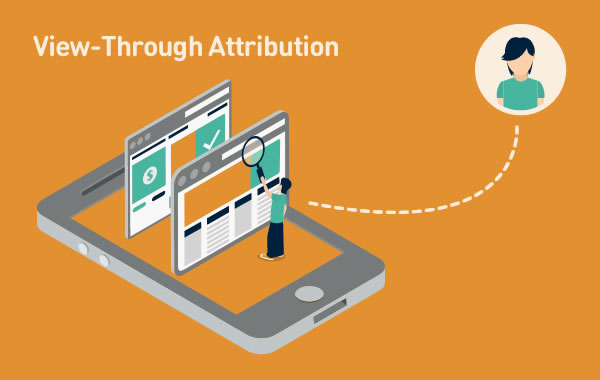Due to the ever-evolving landscape, it is becoming increasingly difficult for businesses to withstand competition. However, some practical tools and strategies are helping companies to maximize their efforts. Marketers always seek potent tools and techniques to make the business emerge and get customers’ attention.
Click-through attribution is a powerful tool that helps businesses better understand the impacts of marketing. Understanding this concept is paramount to achieving success and standing on firmer ground. This article is about click-through attribution and how it is effective for businesses. Dive right in to gain better knowledge and understanding!
What is Click-Through Attribution?
Click-through attribution is a marketing technique used to identify and credit the precise marketing touchpoints that result in a desired action, such as a conversion or a purchase. In other words, the goal is determining which advertisement or marketing message led a person to click through to a website or landing page and eventually complete the desired activity.
A marketing attribution technique called “click-through attribution” credits conversions to a user’s final click before completing the desired action, such as completing a form or making a purchase. Put more simply, it keeps track of the precise marketing interaction that resulted in a conversion.
Let’s say someone clicks on a Facebook advertisement, goes to the website, and buys something. Since this was the final interaction before the purchase, click-through attribution gives full credit for converting to the Facebook ad.
How Does Click-Through Attribution Work?
Click-through attribution tracks user interactions across several marketing channels and touchpoints using tracking technology like cookies and tracking pixels. When users click on a marketing asset, such as an advertisement or link, a unique identification is saved in their browser.
The tracking system finds the last click or touchpoint connected to that user and associates the conversion with it when the user completes a conversion. The efficiency of various marketing channels, programs, and advertisements in generating conversions is then ascertained by combining and evaluating this data. The following is a thorough description of click-through attribution in action:
Click-through attribution tracks user interactions across several marketing channels and touchpoints using tracking technology like cookies and tracking pixels. When users click on a marketing asset, such as an advertisement or link, a unique identification is saved in their browser.
Some Facts You Need to Know About Click-Through Attribution!
The tracking system finds the last click or touchpoint connected to that user and associates the conversion with it when the user completes a conversion. The efficiency of various marketing channels, programs, and advertisements in generating conversions is then ascertained by combining and evaluating this data. The following is a thorough description of click-through attribution in action:
- Tracking Mechanism: Click-through attribution uses tracking technology like cookies, tracking pixels, or unique identifiers to track user interactions across several marketing channels and touchpoints. These tracking devices are included in links, advertisements, and other marketing materials.
- User engagement: The tracking technology records the user’s engagement with a marketing asset, such as clicking on an advertisement, email link, social media post, or display banner, and saves a unique identifier in the user’s browser or device.
- Attribution of Conversions: The tracking technology determines the final click or touchpoint connected to the user before the conversion, which happens when the user subsequently completes a desired activity, such as making a purchase, completing a form, or subscribing to a newsletter. The conversion is ascribed to this final click.
- Cookie Window: Also referred to as the “attribution window,” click-through attribution usually runs within a predetermined time window. This box shows the time frame within which a click or touchpoint can be put to a conversion. The monitoring system and company preferences will determine the duration of the cookie window, which typically lasts from a few days to many weeks.
- Single Touch Attribution: Because click-through attribution only credits the conversion to the final click or touchpoint before the desired action is finished, it is a single-touch attribution model. Put differently, it gives the final contact in the customer journey full credit for the conversion.
- Analysis and Reporting: Click-through attribution data is combined and examined to gain insight into the efficiency of various marketing channels, campaigns, and advertisements in generating conversions. This data helps marketers assess their ads’ return on investment (ROI), optimize their strategies, and allocate resources more effectively.
Restrictions: Although click-through attribution provides insightful information about the consumer journey, it is not without its restrictions. It could ignore the significance of other touchpoints, including offline channels or view-through interactions, that lead to a conversion. Furthermore, tracking and attribution have become more difficult due to the surge in cross-device usage and privacy constraints, necessitating that marketers modify their methods accordingly.
The Significance of Click-Through Attribution
In marketing, click-through attribution measures and links conversions to specific marketing touchpoints. By identifying the final click or interaction before a conversion, marketers may obtain valuable information about the efficacy of their efforts and refine their tactics to optimize return on investment. This is why it matters.
Insight into the Customer Journey
Click-through attribution identifies the marketing touchpoints that have the most significant impact on conversions. This information offers insightful information about the customer journey. Knowing the series of interactions culminating in a conversion, marketers may more efficiently deploy resources and optimize their efforts.
Optimising Marketing Expenditure
With click-through attribution, marketers can more effectively manage their budget by determining which marketing channels and campaigns are most productive. Companies can reallocate or optimize resources away from underperforming channels and increase their investment in channels that generate high-converting traffic.
Evaluation of Ad Performance
Marketers may assess the effectiveness of specific advertisements and creatives within campaigns with click-through attribution. They can determine which advertisements most effectively connect with their audience by examining click-through rates, conversion rates, and other analytics. Then, they can adjust their creativity and messaging appropriately.
Relationship between Revenue and ROI
Thanks to click-through attribution, marketing initiatives, and income growth are directly connected. Businesses can precisely determine each channel or campaign’s return on investment (ROI) by assigning conversions to specific marketing touchpoints. This allows them to make data-driven choices and optimize their marketing ROI.
Enhanced Decision-Making:
With click-through attribution analytics, marketers can make wise decisions about allocating resources, optimizing campaigns, and formulating strategic plans. Their ability to recognize trends, patterns, and areas for development allows them to improve and hone their marketing strategy consistently.
Challenges and Considerations
Although click through attribution provides insightful information, it is essential to understand its limits and use other attribution models in addition to click-through attribution. For instance, click-through attribution could ignore the significance of additional touchpoints that are part of a customer’s journey, such as email marketing or organic search.
Tracking and attribution have become more difficult due to privacy rules and increased cross-device usage. Marketers must overcome these obstacles to provide a flawless user experience and comply with data privacy rules.
Conclusion
Click-through attribution is a powerful tool that enhances the impact of a marketing campaign by helping you optimize it accordingly. It provides valuable insight into the user’s and customer’s journey. You can gain value from these insights and alter marketing campaigns to increase customer engagement and pique interest.
Some marketers are not fond of click-through attribution for various reasons. However, it is a great starting point for many businesses as it helps develop an impactful campaign. Companies must work through their challenges and draft a marketing campaign that works for them.
Don’t miss out on updates and alerts – stay connected! Gossips




